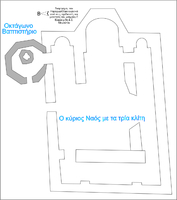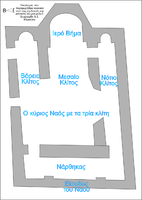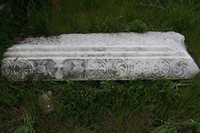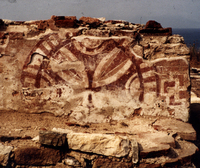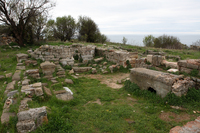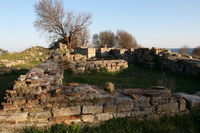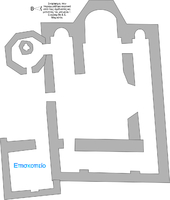Episcopal church
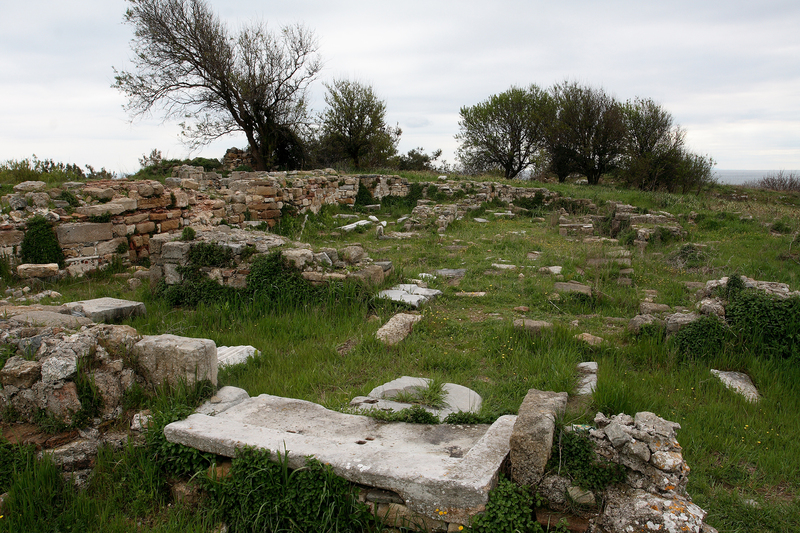

The Episcopal Church is the largest church found within the walls of Polystylon. You can notice the marble threshold of the entrance with the cavities where the door of the Church rests.
The Episcopal Church is the largest church building of the Byzantine city. It was founded in the 9th-10th century and rebuilt in the 11th century. Built on the ruins of an earlier Christian basilica, the church seems to have an uninterrupted operation at least until the 14th century when it was destroyed during the reign of Paleologos. It's a, big, three-aisled basilica with interesting architectural elements, as in many parts of its external walls you can see mortars with decorative coating such as the rosette with a cross in red colour, which is on the north side of the church.
The Episcopal Church has dimensions 23,90m x 15,90m and found to be founded, probably over an earlier, Early Christian, basilica. It dates back to 9th-10th century (Dadaki 1991, 354).
On the northeast corner the octagonal Baptistery of the previous, Early Christian, basilica has been annexed.
The church consists of a narthex, nave and sanctuary and various building phases are distinguished. The Byzantine basilica was built with meticulous rubble interrupted in height of successive rows of brickwork. Additional features in the construction of the monument, as the technique of hidden brick and engravings on the outside coating and joints, that mimic carved stones in a row, show the Constantinople effect (Bakirtzi 1994).
Even today, you could distinguish on the site several embossed lintels made from marble, which have representations of birds, plants but also representations of the lunar cycle.
On the north wall of the church, a crucified rosette was found, today it is exhibited in the Archaeological Museum of Abdera.
Outside the main temple, and tangential to the side of the north wall, you could spot in near perfect conditions, two sarcophagi made out of local limestone. One sarcophagus is on the north side of the baptistery. Perhaps the sarcophagi are coming from the ancient city of Abdera and got used again, for a second time, during the Byzantine period.
This small square building, which is located on the north side and is adjacent to the entrance of the Episcopal Church, was declared by investigators to be the Bishopric which possibly was the home of each Bishop of Polystilon of that time.
This is the Bishopric, as it is represented in this overall architectural sketch, made by the scholars of the region.
X
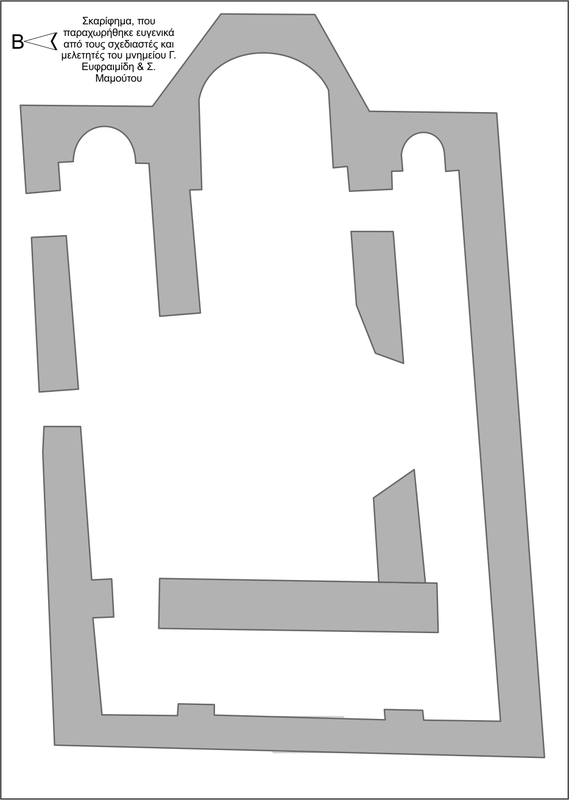
Copyright © Σταυρούλα Δαδάκη, ΑΔ 46 (1991): Χρονικά, σ. 354. Μπακιρτζής, Βυζαντινή Θράκη (330-1453), Θράκη, Αθήνα 1994, σ. 160-162 Αρχείο ΕΦΑ Ξάνθης



